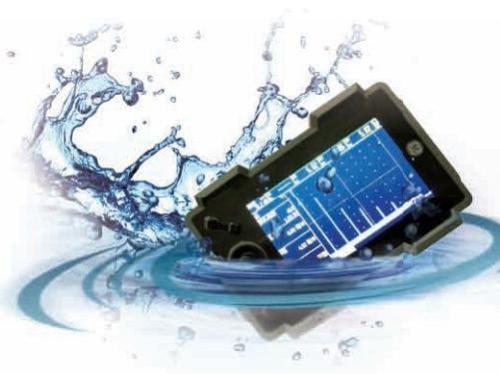What are the types of ultrasonic flaw detector probes?
3 layers disposable ear-loop dust and virus filter FACE MASK N95 Mask,Medical Masks,Disposable Mask,Dust Mask shandong Herui Mechanical Co., Ltd , https://www.heruihorsefloat.com The probe is an important part of the ultrasonic flaw detector device, and it is a device that converts electrical signals and acoustic signals to each other. Ultrasonic flaw detector probes are universally produced in various manufacturers. Most of the current ultrasonic flaw detector probes are manufactured using the principle of piezoelectric effect.
The probe is an important part of the ultrasonic flaw detector device, and it is a device that converts electrical signals and acoustic signals to each other. Ultrasonic flaw detector probes are universally produced in various manufacturers. Most of the current ultrasonic flaw detector probes are manufactured using the principle of piezoelectric effect.
The main role of the ultrasonic flaw detector probe is to convert the returned acoustic wave into an electric pulse. The second is to control the propagation direction and the degree of energy concentration of the ultrasonic wave. When changing the incident angle of the probe or changing the diffusion angle of the ultrasonic wave, the acoustic wave can be The main energy is injected into the medium at different angles or changes the directivity of the acoustic wave to increase the resolution. The third is to realize the waveform conversion. The fourth is to control the operating frequency and is applicable to different working conditions.
A wide variety of ultrasonic flaw detector probes allow Instrument World World to answer common probe types in everyday use:
1ã€Ultrasonic flaw detector Straight probe Single probe for vertical flaw detection, mainly used for longitudinal wave flaw detection. The straight probe is composed of a socket, a housing, a protective film, a piezoelectric wafer, a sound-absorbing material, etc. The head contact surface is a replaceable soft film for detecting a rough-surfaced workpiece.
2. Ultrasonic flaw detector Detachable oblique probe A special type of oblique probe. The oblique probe is divided into two parts, the oblique block and the probe core. When used, the two are combined. Commonly used specifications 2.5P20 probe core, different K value of the ramp (1.0, 1.5, 2.0, 2.5, 3.0, etc.). Accepts custom-made detachable probes in other sizes.
3, Ultrasonic flaw detector oblique probe oblique probe, mainly used for transverse wave flaw detection. The oblique probe is composed of a ramp, a piezoelectric chip, a sound absorbing material, a housing, a socket, etc. The sound beam of the oblique probe is tilted with the surface of the probe, so it can be used to detect the position where the straight beam cannot reach, or the direction of the defect and the detection surface. There is an angle between the areas.
4, ultrasonic flaw detector surface wave probe for transmitting and receiving surface wave probe. The surface wave is a wave that propagates along the surface of the workpiece. The amplitude decreases rapidly with the depth below the surface. The propagation velocity is 0.9 times that of the transverse wave. The vibration track of the particle is elliptical. Surface wave probes generate surface waves on the surface and near surfaces of the workpiece being inspected. The angle listed in the model is the tilt angle (incident angle) of the plexiglass slope block.
5, ultrasonic non-metallic detection probe for the detection of non-metallic materials, such as concrete, wood, rocks and so on. Used in pairs, one for one, and work for transmission. Aluminum alloy housing, frequency from 12.5KHz to 250KHz, the socket connected to the probe line is Q9.
6. Ultrasonic Flaw Detector The dual crystal probe is equipped with two wafer probes, one as a transmitter and the other as a receiver. Also known as split probe, or joint dual probe. The double crystal probe is mainly composed of a socket, a housing, a sound insulation layer, a transmitting wafer, a receiving wafer, a delay block, and the like. A vertical longitudinal acoustic beam is used to scan the workpiece. For relatively straight probes, dual crystal straight probes have better near-surface defect detection capabilities; for coarse or curved detection surfaces, they have better coupling effects.
7. Ultrasonic flaw detector Small diameter tube probe Single crystal micro transverse wave oblique probe for the inspection of small diameter thin wall tube welded joints. The inspection standard is based on the electric power industry standard DL/T8202002 "Technical Specification for Ultrasonic Inspection of Pipeline Welded Joints" and is suitable for the detection of small diameter thin-walled pipes with pipe diameters ≥32mm, ≤159mm, wall thickness ≥4mm, and less than 14mm; also applicable to other industries. Similar to the inspection of the pipeline. The dimensions of the probe are small, the leading edge distance is ≤ 5mm, the initial pulse width is ≤ 1.5mm (corresponding to the depth in steel), and the resolution is greater than or equal to 20dB. According to the difference of the outer diameter of the pipeline being inspected, the detection surface is processed into the arc of the corresponding pipe diameter.
8. Ultrasonic immersion probes are used in semi-automatic or automated inspection systems. When the sound beam axis emitted by the probe is perpendicular to the detection surface, the longitudinal wave straight sound beam scans the workpiece; adjust the probe beam axis and the detection surface into a certain angle, the sound beam is refracted at the interface between the two media of water and workpiece, A tilted transverse beam sound beam is generated in the workpiece to scan the workpiece. The plexiglass or cured epoxy resin in front of the probe wafer is processed into a certain curvature (spherical or cylindrical surface) to obtain a spot- or line-focus water-immersed probe.